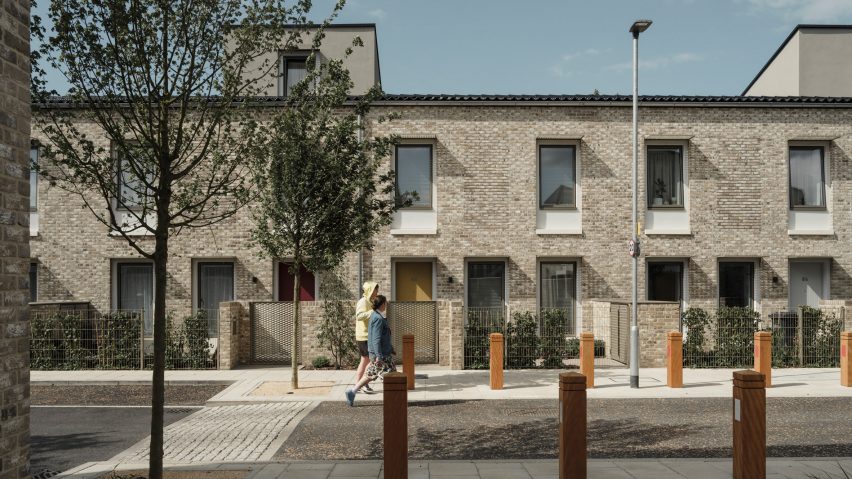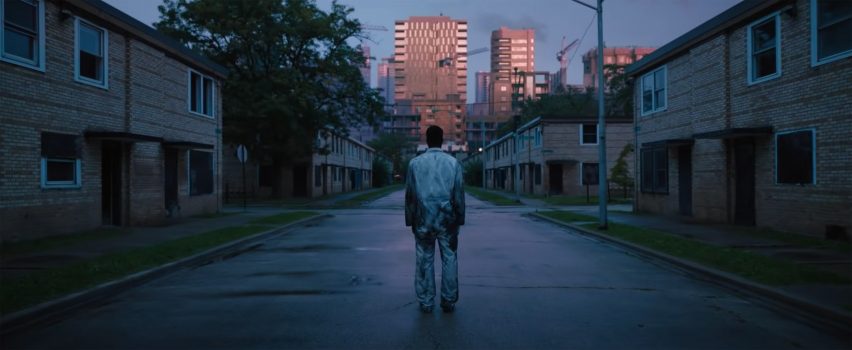
"Are we ready to see public housing's beauty and suburbia's impoverishment?"
Decades of harmful policymaking mean America exclusively associates public housing with squalor, but an influx of subsidized homes would make the suburbs infinitely better, writes Dana Cuff.
At the June 2022 American Institute of Architects convention in Chicago, former president Barack Obama admonished architects to listen more carefully to the people around us. Listening closely to him, did you catch his surprising rallying cry? Architects should fill the suburbs with new public housing. Okay, he didn't say that verbatim, but let me piece the claim together.
Speaking about how neighborhood politics work against housing equity, Obama called out "liberal communities… when it comes to siting affordable housing". These are the NIMBY folks who block multifamily and especially affordable housing at public hearings, community meetings, and neighborhood councils.
There is a blind spot shared by nearly everyone in the US
To counter NIMBYs, the YIMBY movement crystalized around offering a supply-side strategy for all forms of housing production and in turn, land use deregulation. But since YIMBYs foreground pure production over affordability, they exacerbate the gentrification that has turned diverse cities into tech-bro hubs.
More recently, a third movement formed that addresses serious YIMBY shortcomings, called the "3Ps" approach to the housing crisis. It advocates for production paired with preservation of existing affordable housing and protection of communities against eviction and displacement. Evolving, effective 3PS policies prioritize a commitment to low-income tenants of color who have endured long histories of spatial and wealth injustice.
However, there is a blind spot shared by nearly everyone in the US, including NIMBY-YIMBY-3PS groups, that stems from myth and misunderstanding. We think that publicly funded, owned, and operated developments for low-income households – that is, public housing, or what is called social housing in other countries – could never be enticing, beautiful places to live.
Critics of all political stripes condemn public housing in America as gang-infested, crime-ridden, and squalid – unfair descriptors that imply dignified architecture is instead barren and unadorned. Federal housing agencies were the primary builders of modern architecture in the form of public housing from the '30s through the '60s, which was so disparaged that it swamped public perceptions of all modernist buildings.
If people hold a specific image of public housing, it might be the imploding towers of Pruitt-Igoe in St. Louis or abandoned brick row houses, like those at Chicago's Cabrini-Green featured in the 2021 Black horror film Candyman, written by Jordan Peele and directed by Nia DaCosta. In that film, racial revenge is carried out by a Black ghost-of-Cabrini-Green slasher, who indiscriminately kills the gentrifiers that blithely summon him, oblivious to the harm they themselves have wrought.
When Black life at early Cabrini-Green is portrayed in Candyman, it is brutally policed, and later when the housing is abandoned it is just as frightening. It reminds us that where real, full-bodied communities were living, newspapers, politicians, and researchers instead have consistently reinforced and portrayed the horror of a one-dimensional, racialized other.
If people hold a specific image of public housing, it might be the imploding towers of Pruitt-Igoe
Such portrayals proved prophetic in Chicago, first when the immigrant neighborhood called Little Hell was buried under Cabrini-Green in the 1930s, and again in the 2000s when mostly Black Cabrini-Green was demolished to make way for the economic advance of mostly White Near North Side of downtown Chicago.
"Chicago is a case study of times architecture reinforced inequity," according to Obama. He's right that public housing was a tool of racial discrimination, its development used to justify the demolition of Black and Brown urban neighborhoods. Of the 3Ps, there was no preservation or protection, only production. Guided by federal policy and minimal funding outlays, the local authorities that managed public housing segregated early housing, engaged in racial steering, and dramatically failed to maintain their buildings.
But the former president is also wrong, because while the policies surrounding federally subsidized housing were abhorrent, the buildings themselves and their architecture were models of decent, modern housing.

This requires looking past the stigmatized images and planned abandonment of places like the rowhouses of Cabrini-Green. Those public housing developments built in the 1930s were solidly constructed with light on two sides, good ventilation, individual entryways at or near ground level, a small building footprint compared to traffic-free greenspace, and shared community rooms. The talented teams who designed them included Black as well as White architects, like William Lescaze, Richard Neutra, Hilyard Robinson, Oscar Stonorov, Paul Williams, John Louis Wilson Jr, and followers of Frank Lloyd Wright.
Still, when widespread demolition of public housing began in the 1990s after decades of managerial neglect, it was justified with the same logics of earlier, racialized "slum" removal. The destructive irony of the belief that buildings cause social injustice is not lost on the characters in Candyman: "White people built the ghetto and then erased it when they realized they built the ghetto."
Critics and many historians write that public housing was doomed from the beginning – a narrative that feeds the defamatory view that the architecture of public housing was a problem that could only be solved by demolition.
In actuality, isn't the single family home the real nightmare?
What would it take to redeem public housing as a means to advance more equitable cities? It might begin with convincing decision-makers and communities that subsidized housing is part of a better future, one that architecturally dignifies neighborhoods and their diverse occupants. Contrary to the partisanship that taints American politics, conservatives and progressives alike contrast the nightmare of public housing against the dream of single family homeownership in the suburbs.
This distortion was abundantly clear earlier this year when California Assemblyman Alex Lee gathered support in legislative committees for The California Social Housing Act, AB2053. Lobbying for an innovative new form of public housing authorization, he took the unusual step of propping up large architectural photos in every hearing, like a science fair display. To the surprise of legislators with their prejudiced stereotypes, the multifamily, subsidized housing from Vienna, Singapore, and Maryland demonstrated that social housing could be well designed and desirable.
Lee's bill narrowly failed in June, but the housing crisis isn't going anywhere. California and other states will sponsor more subsidized social housing legislation next season despite suburban opposition.
So in actuality, isn't the single family home the real nightmare? Are we ready to stare into our blind spots to see public housing's beauty and suburbia's impoverishment? Think of it: we could kill four birds with one stone if we transformed wealthy single family zones by building social housing within them.
First, it would free up the most underutilized land in cities today for more dense, affordable housing. Unlike past wholesale razing of targeted neighborhoods, new multifamily, mixed income housing could be tactically located on infill sites. Second, that added density will curtail sprawl, helping to advance the fight against climate change. Third, it would transform the motherland of privatization and segregation into collective terrain, opening it to those formerly shut out of landed wealth.
Suburban property would be necessarily shared with new multifamily units subsidized for sale and for rent. As a final bonus, the new, more diverse group of neighbors will reduce the power of current NIMBYs who are disproportionately elderly, White, financially stable homeowners.
Ergo, social housing to fill the suburbs. We hear you loud and clear, Mr. Obama.
Dana Cuff is director of cityLAB and a professor of architecture and urban design at the University of California, Los Angeles.
The main image shows Goldsmith Street in Norwich, UK, an award-winning social housing development designed by Mikhail Riches. Photo is by Tim Crocker.